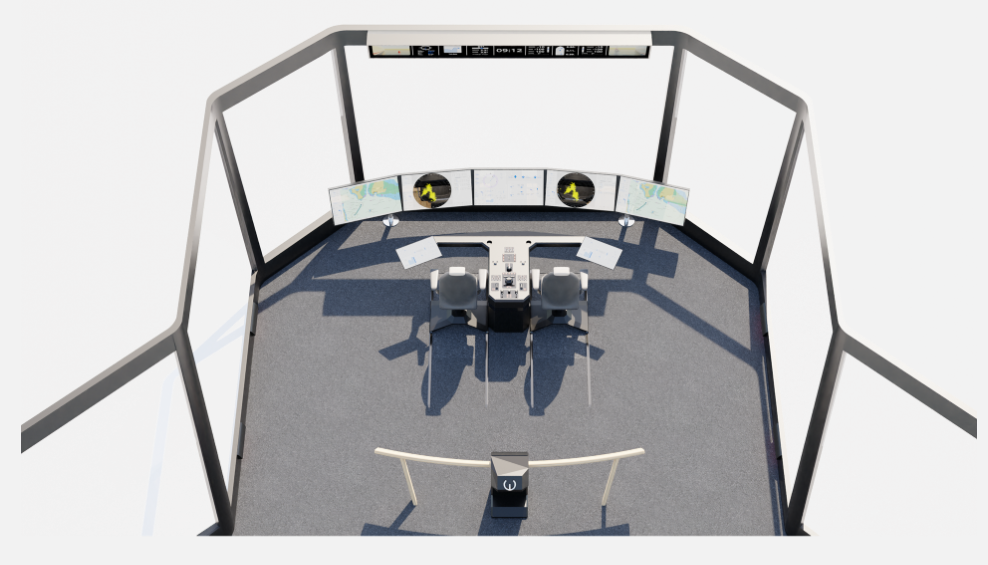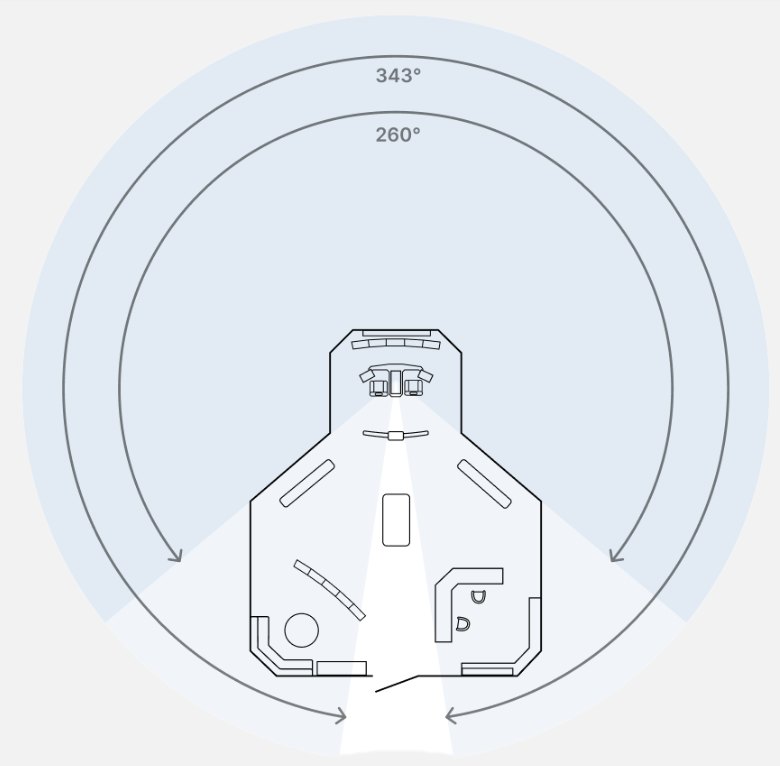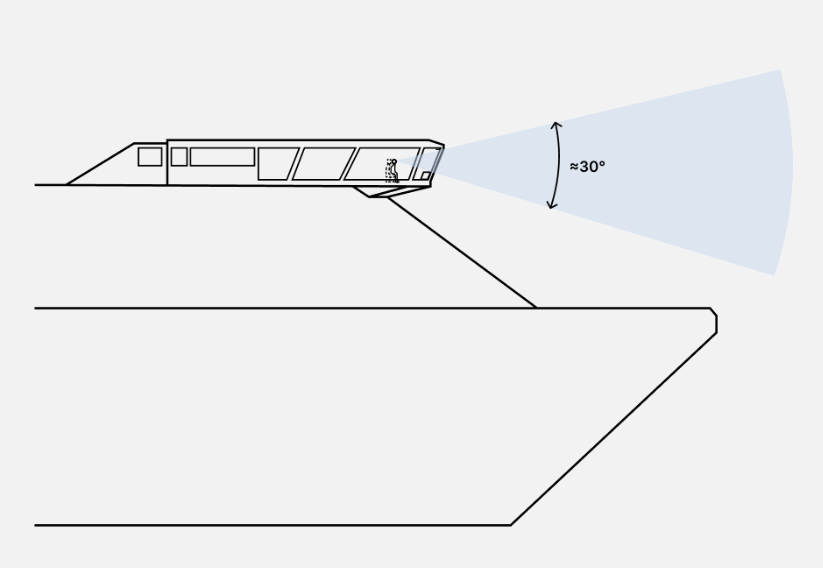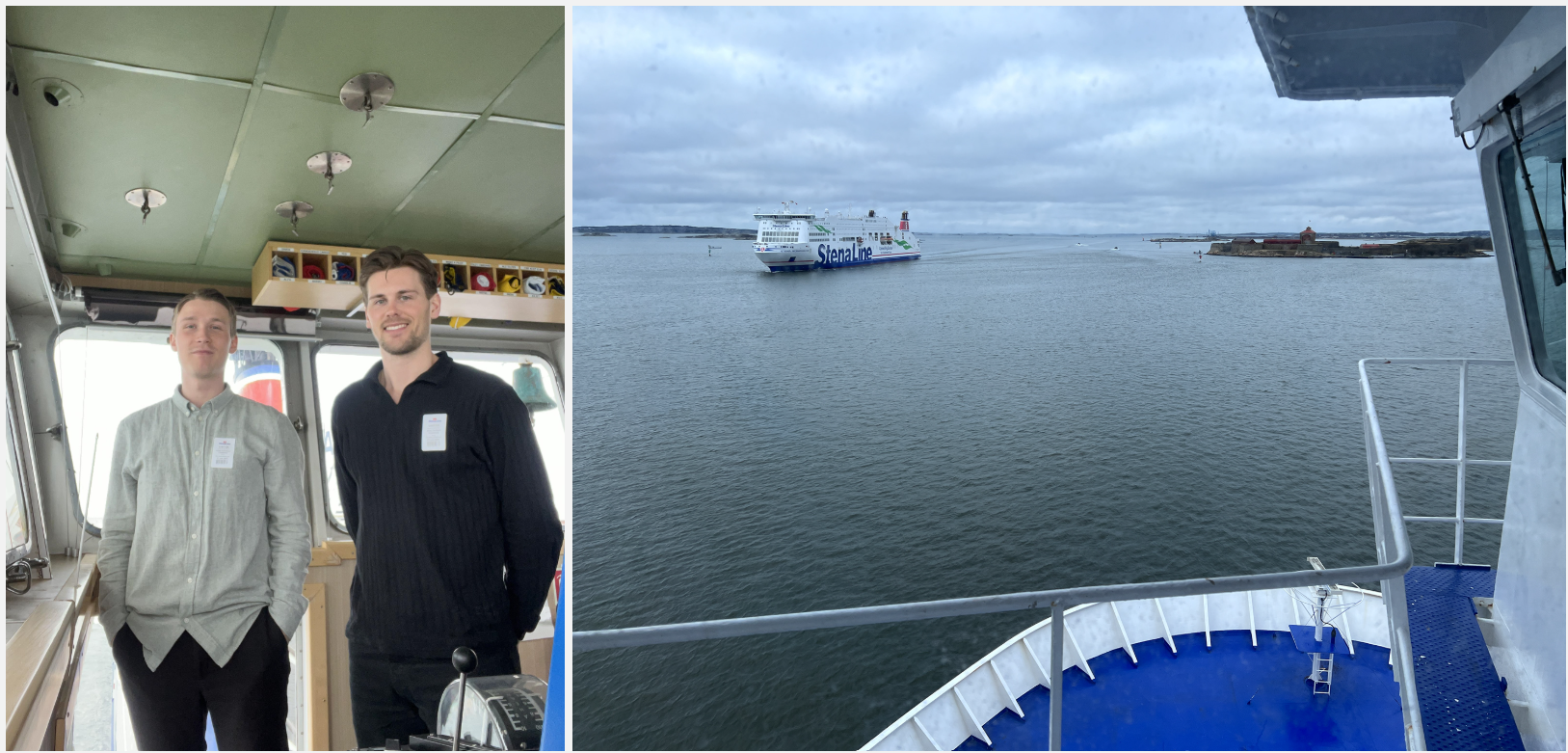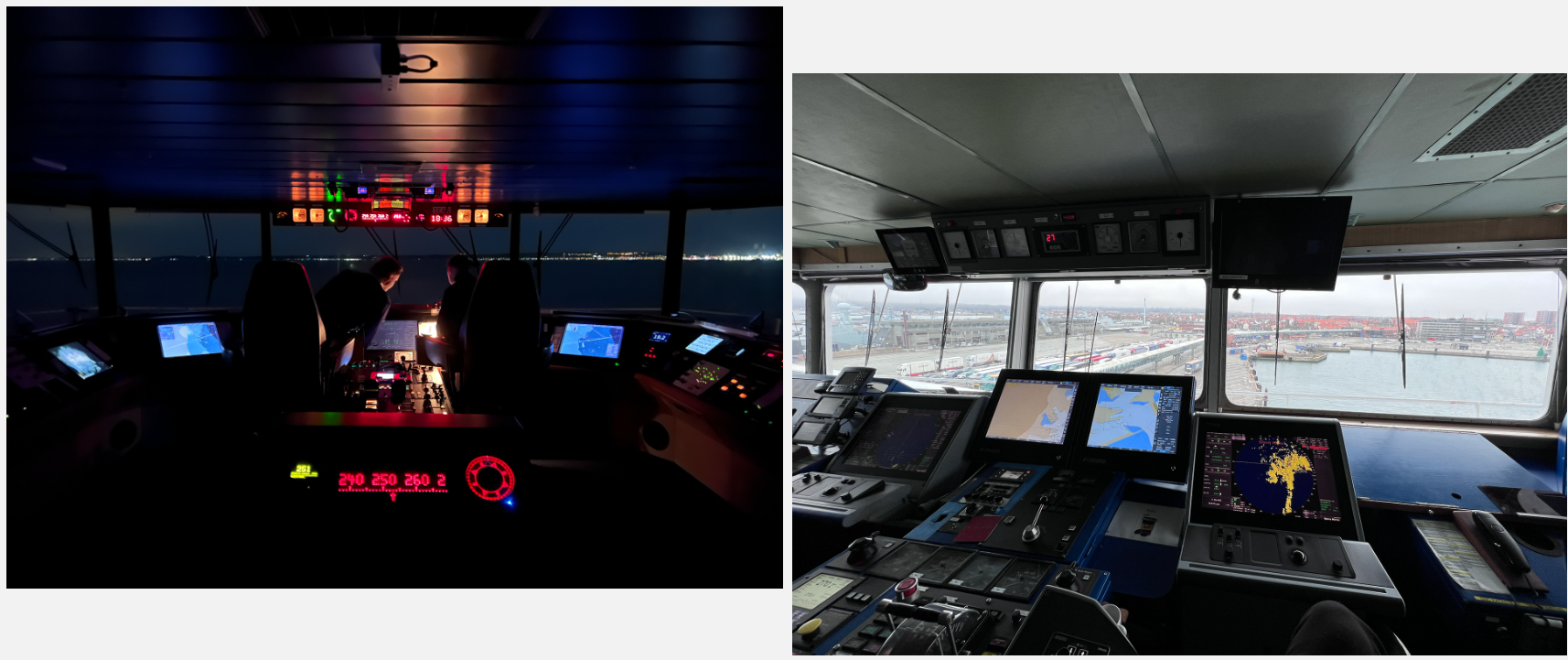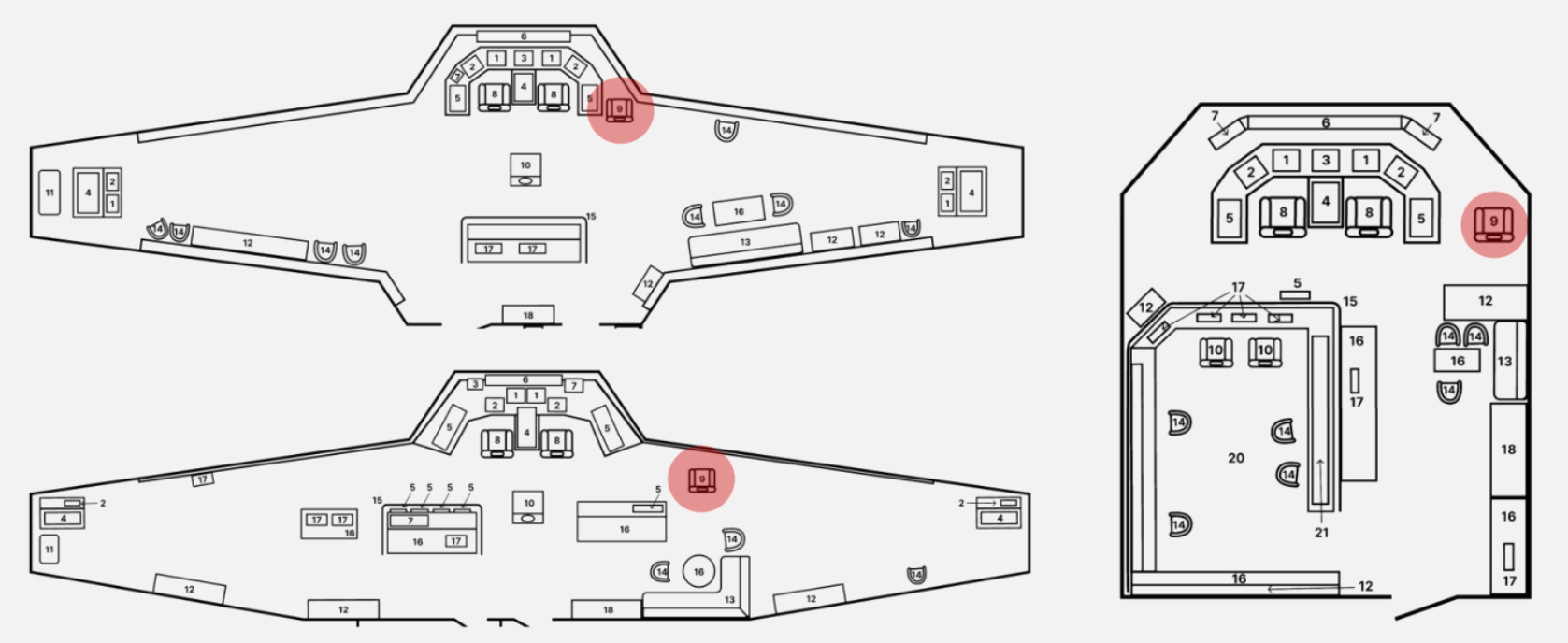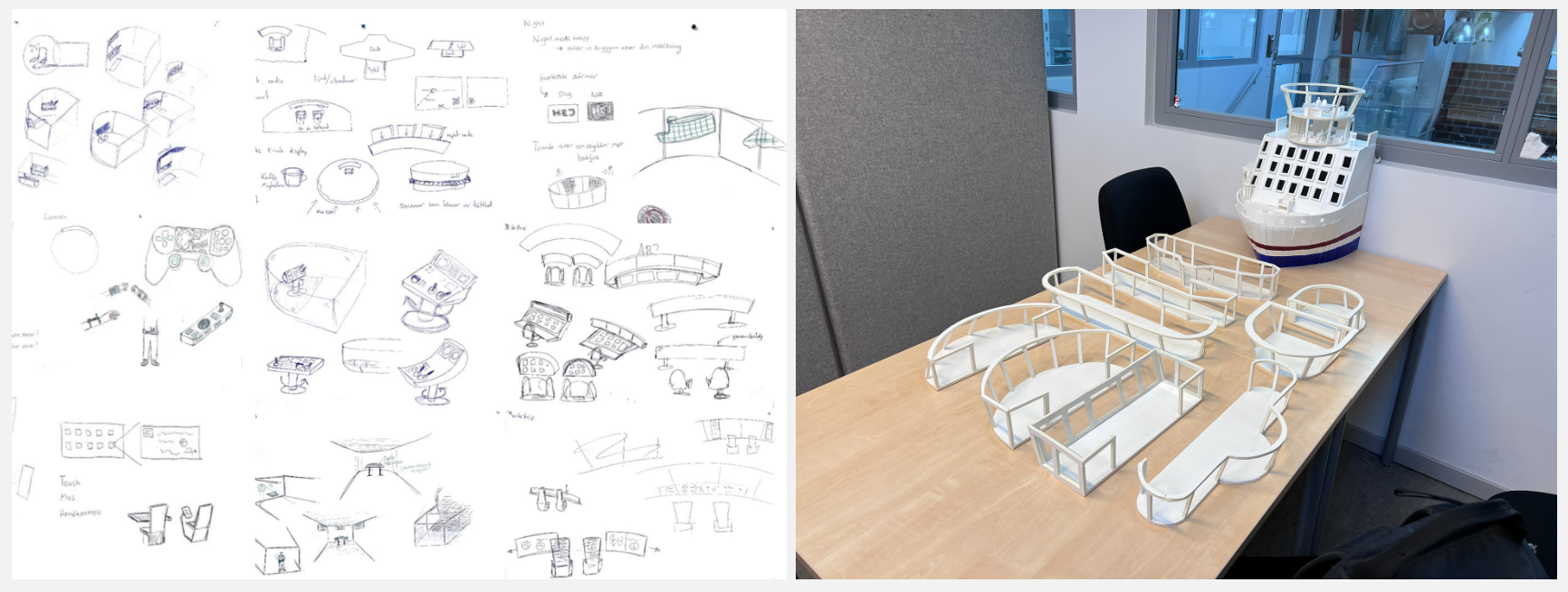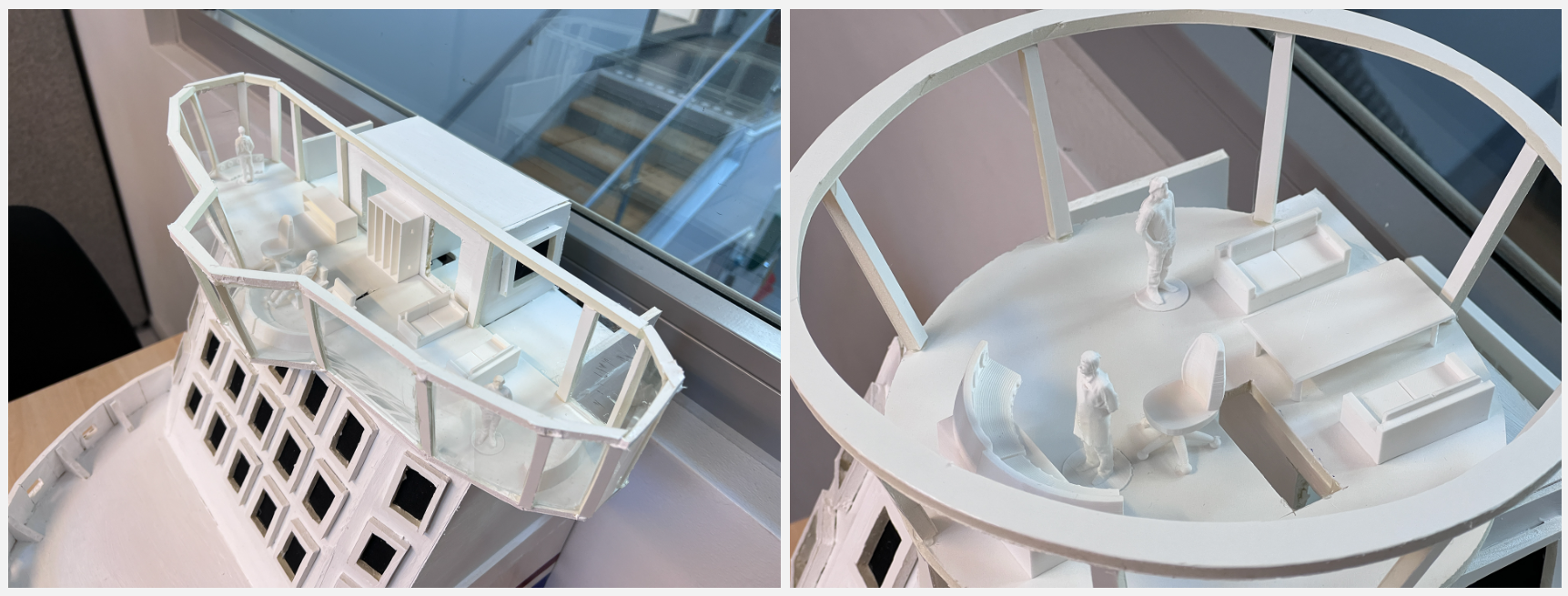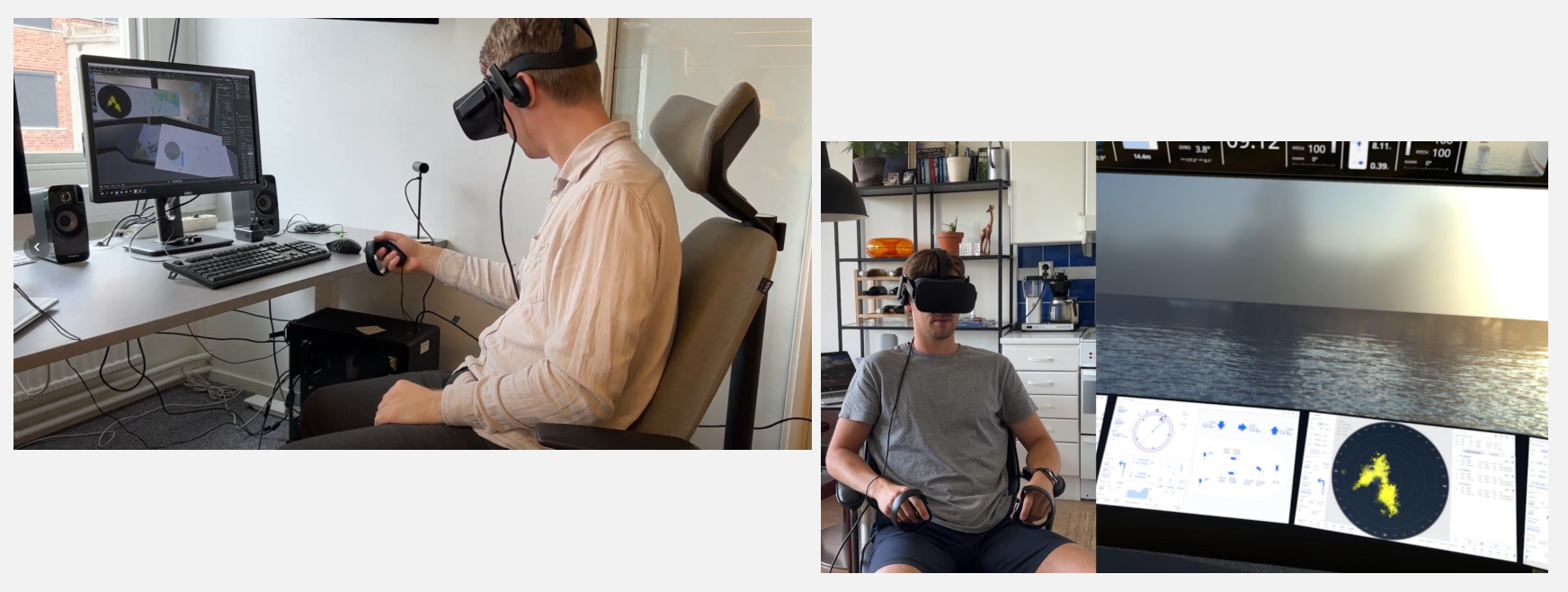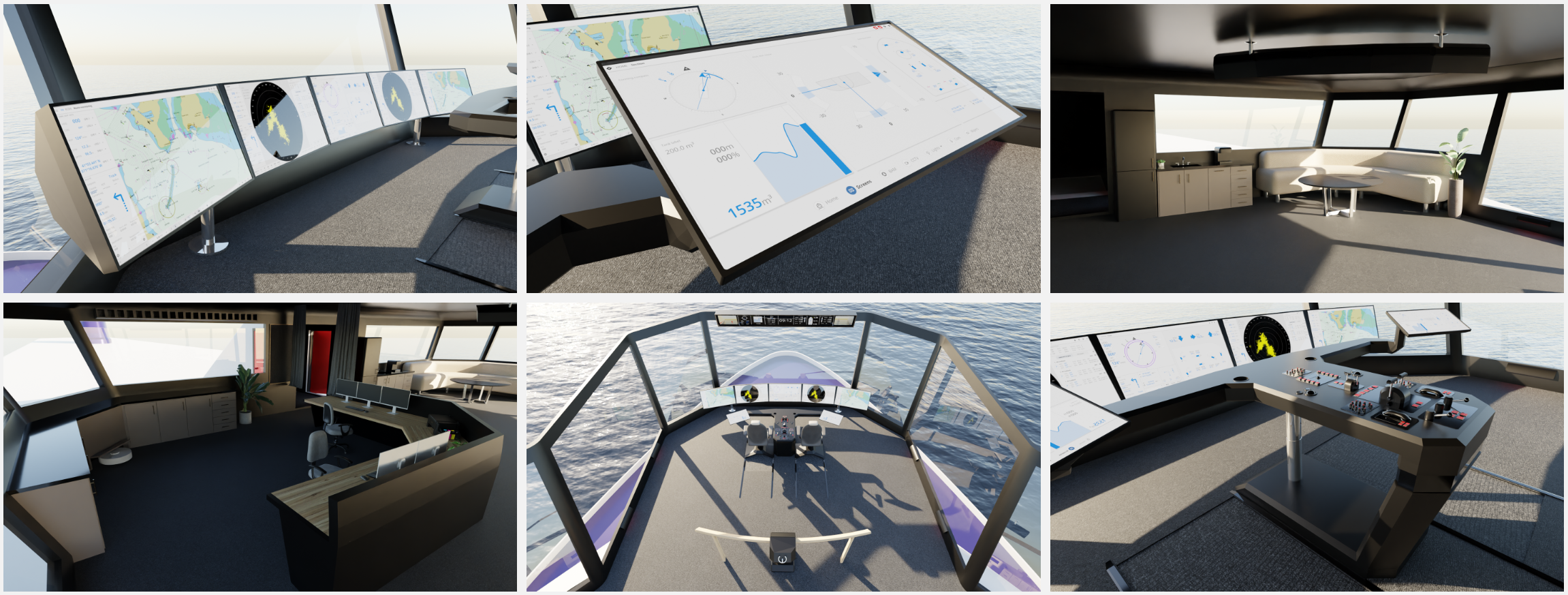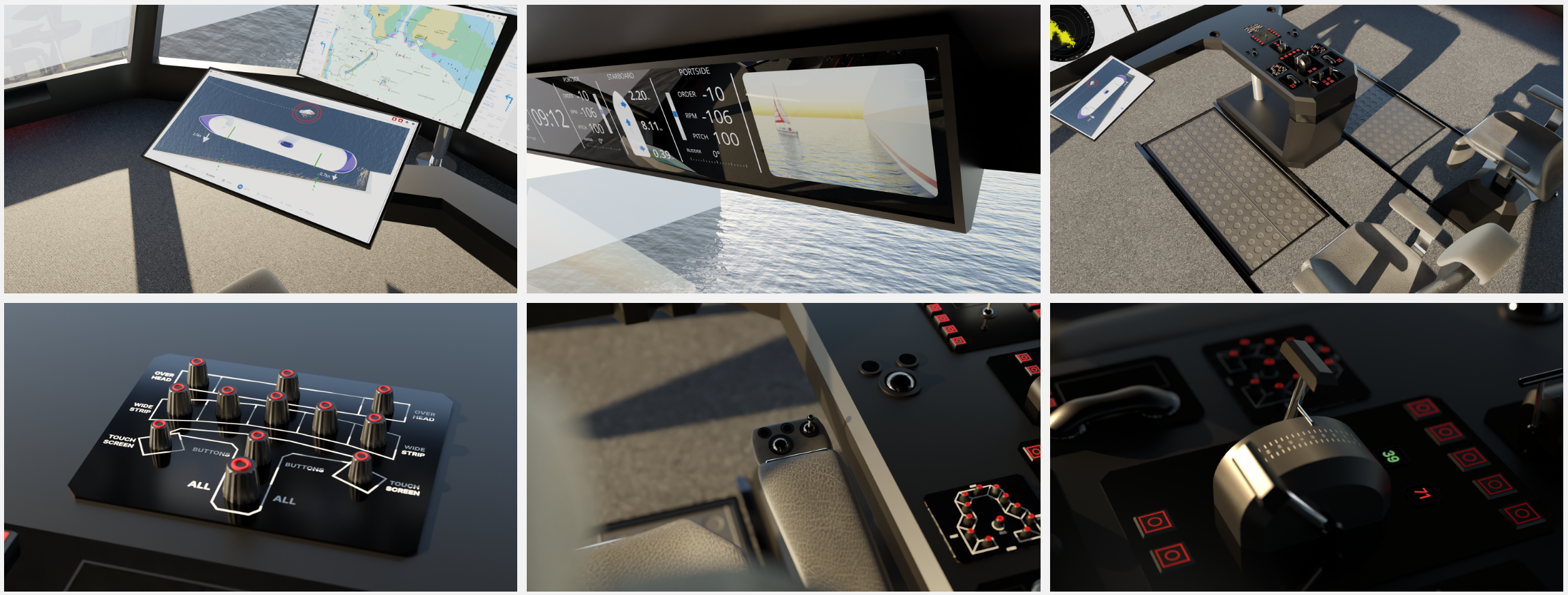With the aim to develop a vision for the future of ship bridge design on large passenger vessels, this master’s thesis project led to an interesting combination of field studies, creative ideation sessions, digital modeling, VR evaluations, video editing, and much more.
The bridge vision was to satisfy requirements regarding layout, physical/cognitive ergonomics, social aspects, and user-centered design while incorporating the latest technological advancements and considering how more advanced automation might affect bridge design in the near future. The project was conducted by myself and my colleague Jens Junkers in collaboration with ABB.



